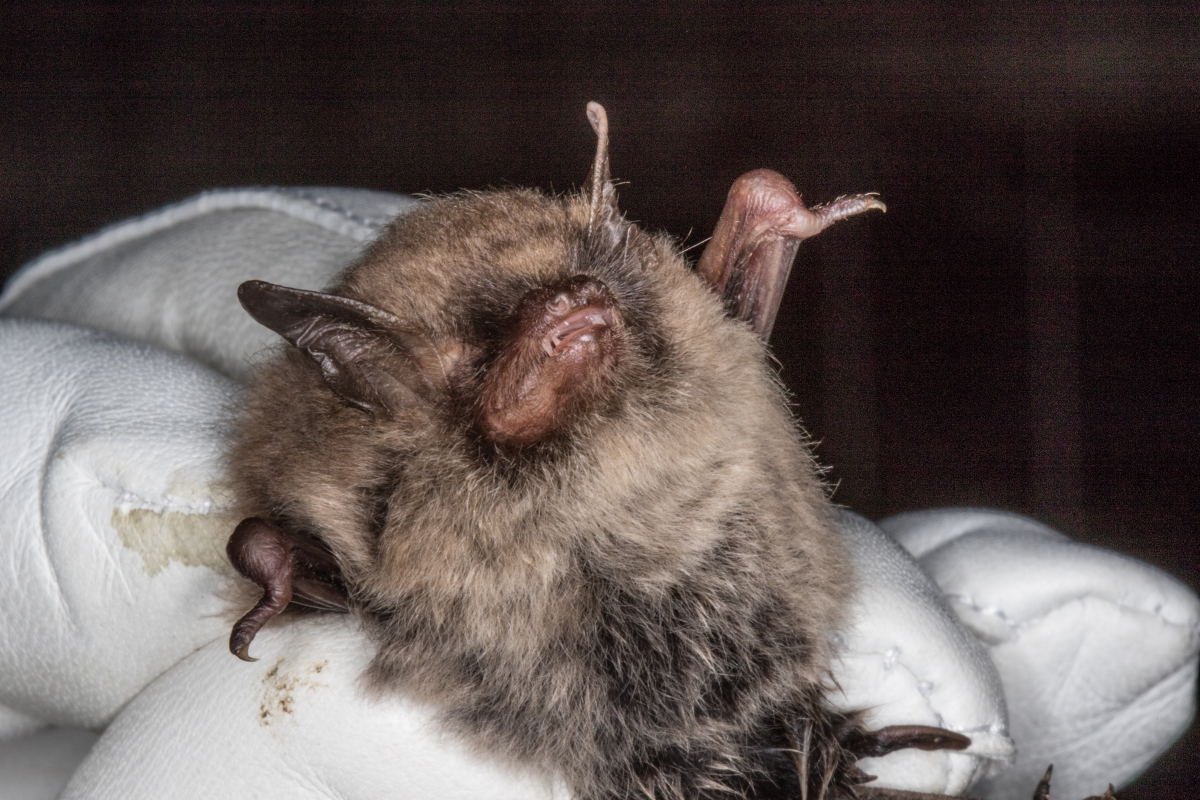22nd June 2016

Alcathoe's bat - Myotis alcathoe
During a recent Jersey bat group bat trapping session as part of the Woodland Project a small myotis bat was caught which we were unable to formally identify. Following DNA analysis of a faecal sample we are delighted to confirm that the bat was an Alcathoe's bat - Myotis alcathoe. This is the first record for this species in the Island.
Alcathoe's bat is a rare species with narrow ecological requirements. It was only identified as a separate species in Greece in 2001, and has only been confirmed in a few locations in the UK (in Sussex and Yorkshire) as well as from limited sites across Europe.
The IUCN Red List assesses Myotis alcathoe as "Data Deficient", but it is considered threatened in several areas because of its rarity and vulnerability to habitat loss. The species is a woodland specialist, with a strong preference for roosting in trees.
Dr Amy Hall, Chair of the Jersey Bat Group said 'We are very excited to find this species in the Island for the first time. As the Woodland Project moves forward there may be further exciting new discoveries'.
Website: www.jerseybatgroup.org
Email: enquiries@jerseybatgroup.org
Jersey Bat Group
The Jersey Bat Group registered charity, our mission statement is:
To survey and monitor bat populations, roosts, hibernacula and foraging sites in Jersey and provide information and education regarding bats to the Jersey public. Where possible to take steps to help protect local bat populations, in line with recommendations from the Species Action Plan.
Woodland Bat Project
The woodland bat project is envisaged to be a five year project and is currently still in its initial phase. Bat boxes have been installed in five woodlands within Jersey, with these being checked for bat presence by licenced bat workers. Static bat detectors are starting to be deployed within these woodlands to record bat ultrasonic calls in order to try to establish species present via bat-call analysis.
Bats are also being directly trapped under licence by trained professionals. Morphometric data are taken and identification keys used in order to confirm the species. Species confirmation is not always possible, so faecal samples are obtained and these are sent to the University of Warwick for phylogenetic analysis.
Related news
Bats and beyond campaign to support our scientific research
17th April 2024
Batty Laureate Winners 2023-24
7th March 2024
21st February 2024
